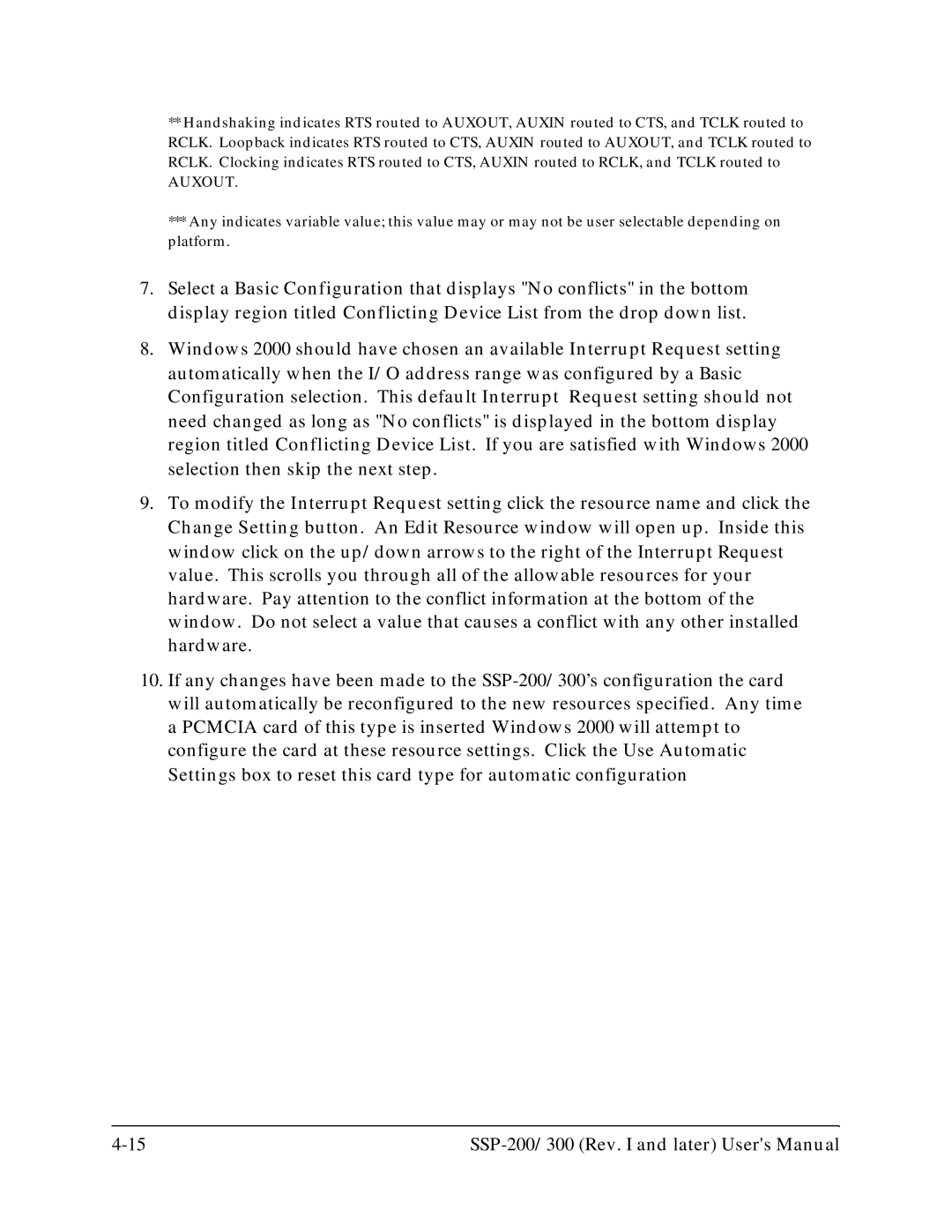**Handshaking indicates RTS routed to AUXOUT, AUXIN routed to CTS, and TCLK routed to RCLK. Loopback indicates RTS routed to CTS, AUXIN routed to AUXOUT, and TCLK routed to RCLK. Clocking indicates RTS routed to CTS, AUXIN routed to RCLK, and TCLK routed to
AUXOUT.
***Any indicates variable value; this value may or may not be user selectable depending on platform.
7.Select a Basic Configuration that displays "No conflicts" in the bottom display region titled Conflicting Device List from the drop down list.
8.Windows 2000 should have chosen an available Interrupt Request setting automatically when the I/O address range was configured by a Basic Configuration selection. This default Interrupt Request setting should not need changed as long as "No conflicts" is displayed in the bottom display region titled Conflicting Device List. If you are satisfied with Windows 2000 selection then skip the next step.
9.To modify the Interrupt Request setting click the resource name and click the Change Setting button. An Edit Resource window will open up. Inside this window click on the up/down arrows to the right of the Interrupt Request value. This scrolls you through all of the allowable resources for your hardware. Pay attention to the conflict information at the bottom of the window. Do not select a value that causes a conflict with any other installed hardware.
10.If any changes have been made to the
